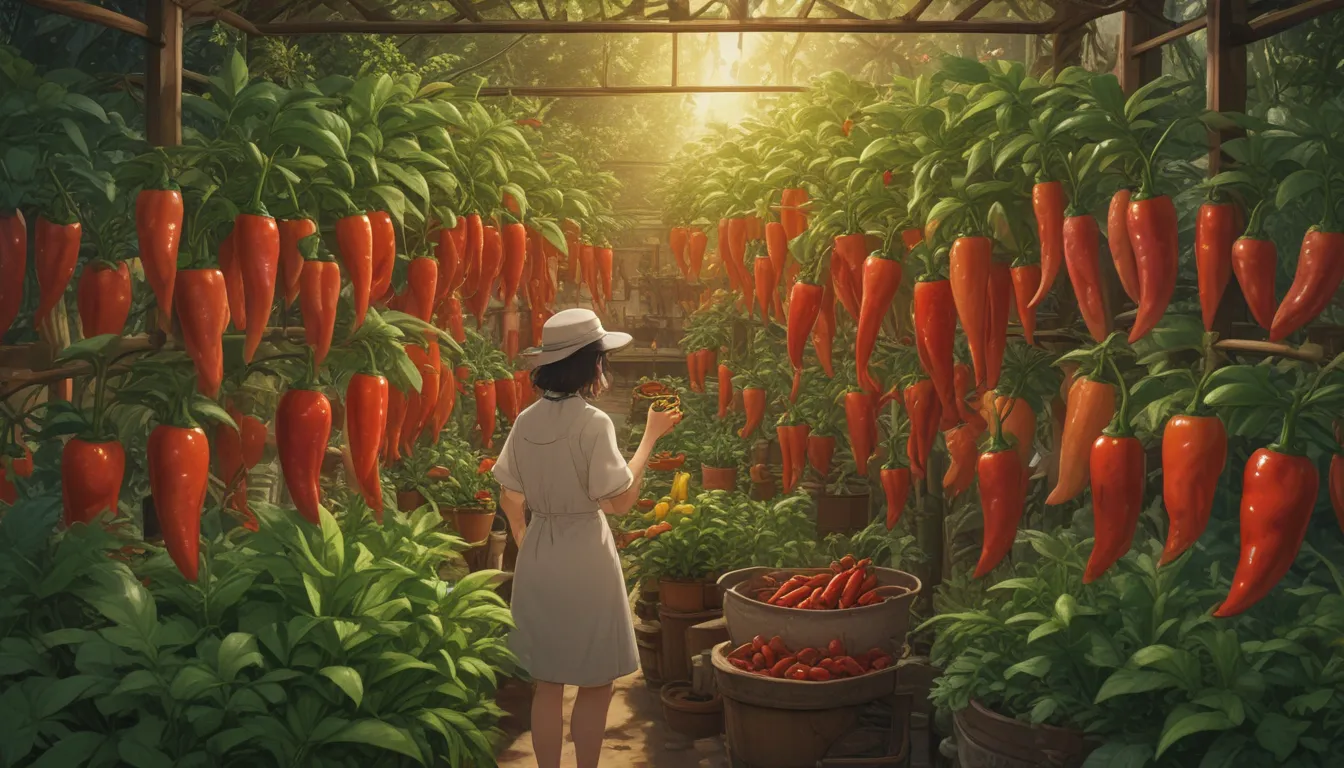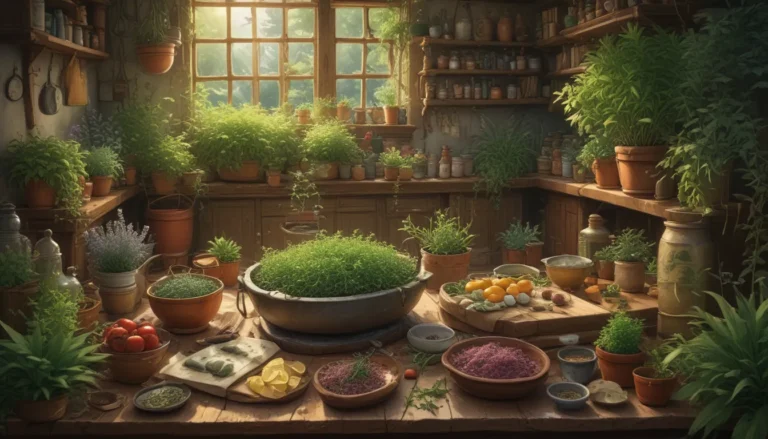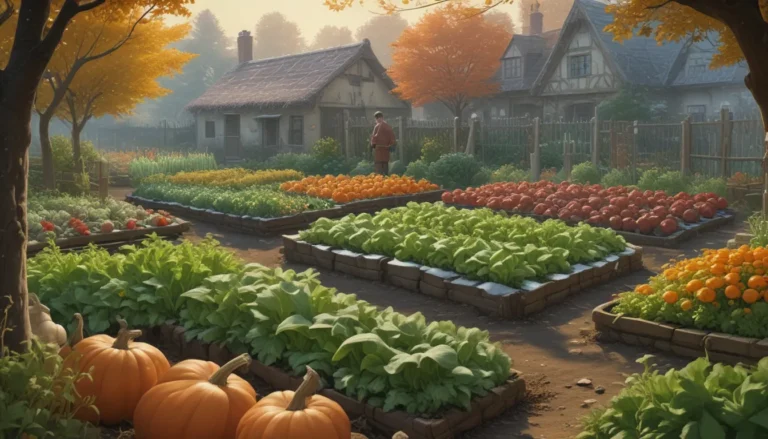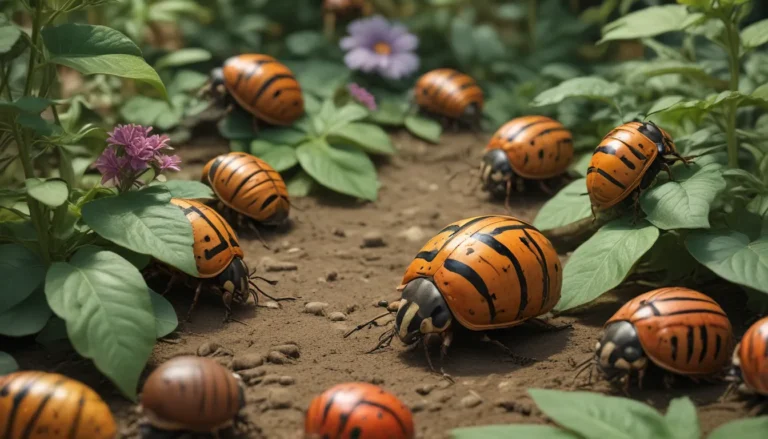A Comprehensive Guide to Planting and Growing Hot Peppers

Get Ready to Spice Up Your Garden
Do you enjoy the thrill of eating a spicy ‘Carolina Reaper’ or savoring the fruity flavor of a chocolate habanero? If so, growing hot peppers in your garden will be a rewarding experience. With different heat levels, vibrant colors, and unique flavors, hot peppers are a versatile addition to any garden.
Why Are Hot Peppers So Appealing?
Hot peppers belong to the Capsicum spp. (nightshade) family, which includes popular varieties like jalapenos, cayenne, and bell peppers. These plants produce capsaicin, a compound responsible for their spicy taste and heat levels. Birds are attracted to peppers, enabling them to spread seeds without affecting their taste.
From common jalapenos to super-hot ‘Ghost’ peppers, the diverse shapes, colors, and heat levels make hot peppers a fascinating addition to any garden. Capsicum spp. plants have tall bushy growth habits, with some varieties growing up to nine feet tall in ideal conditions.
Understanding Heat Levels in Peppers
Peppers are rated based on their heat levels using Scoville Heat Units (SHU). The heat can range widely from mild Anaheim peppers at 500 to 2,500 SHU to extremely hot ‘Trinidad Morgua Scorpion’ at 1.2 – 2 million SHU. The variation in heat levels can be due to factors like maturity at harvest and individual tolerance levels.
When consumed, capsaicin in peppers triggers a unique burning sensation in the mouth by activating TRPV1 receptors. This reaction can lead to sweating, redness, and other physical responses as the brain perceives heat.
Planting Hot Peppers: Cultivation and History
Historically, pepper plants originated in South and Central America and were cultivated centuries ago to add spice to staple foods. European explorers introduced chilis to other continents, leading to their global popularity.
Peppers prefer rich, loose, and well-drained soil with at least eight hours of sunlight daily. Proper watering, fertilization, and temperature management are key to healthy plant growth. Avoid cold, windy conditions and implement techniques like the Florida weave for plant support.
Propagation Techniques for Peppers
-
From Seed: Start seeds in biodegradable pots with a seed-starting mix. Water lightly, provide warmth with a heat mat, and maintain adequate lighting. Transplant seedlings outdoors gradually after the last frost date.
-
Transplanting Seedlings: Space pepper plants 18-30 inches apart to prevent overcrowding and potential diseases. Harden off seedlings before transplanting, and choose rich, soil with good drainage for optimal growth.
Selecting Cultivars and Hybrids
Choose from a wide selection of pepper cultivars and hybrids to suit your taste preferences. From the fiery ‘Pepper X’ to sweet ‘Blazing Banana’ heirloom hybrids, there’s a pepper variety for every palate. Consider nuanced flavors like the smoky ‘Chocolate Habanero’ or fruity ‘Scotch Bonnet’ for diverse culinary uses.
Maintaining Healthy Pepper Plants
Pepper plants require proper support, especially as they grow taller with heavy foliage and fruits. Utilize stakes, tomato cages, or the Florida weave method for plant support, ensuring they remain stable throughout the growing season. Pruning when young can encourage branching and maximize fruit production.
Managing Pests and Diseases
Prevent common pests like aphids, cutworms, thrips, and tomato hornworms from damaging pepper plants through proactive measures. Utilize netting to deter birds and reflective mulches to repel insects. Address bacterial spot, wilt, blossom end rot, and mosaic virus promptly with appropriate treatments and preventative methods.
Harvesting, Preserving, and Cooking Tips
-
Harvesting: Test pepper maturity by tasting to evaluate flavor preferences. Use scissors to clip ripe peppers without damaging the plant, allowing for continued fruit production. Experiment with maturity levels to discover unique flavor profiles.
-
Preserving: Store peppers in the refrigerator crisper drawer for short-term use, or pickle, dry, or freeze them for extended preservation. Explore recipes like pepper jelly, chili con carne, or pepper-infused chocolate bark for diverse culinary applications.
-
Recipes and Cooking Ideas: Transform homegrown peppers into savory dishes like stuffed peppers, shrimp ceviche, or pepper jelly for a gourmet touch. Experiment with flavor combinations like smoky habanero chocolate bark or sweet and spicy pepper chili for inspired culinary creations.
Conclusion: Cultivating Flavorful Peppers for Your Garden
With a diverse range of cultivars, heat levels, and flavors, hot peppers offer endless possibilities for culinary experimentation and garden enjoyment. By following proper cultivation practices, selecting suitable cultivars, and managing pests and diseases effectively, you can enjoy a bountiful harvest of vibrant, flavorful peppers.
Whether you prefer the mild sweetness of bell peppers or the intense heat of ‘Pepper X,’ hot peppers offer a unique sensory experience that transforms everyday meals into culinary delights. Embrace the thrill of growing, harvesting, and savoring your homegrown peppers as you embark on an exciting journey into the world of gourmet gardening.





